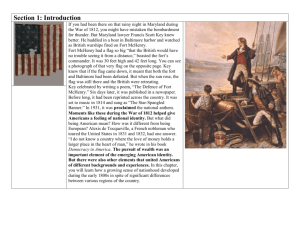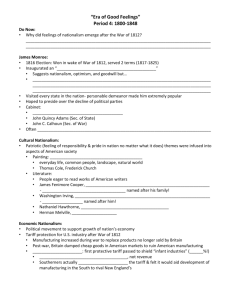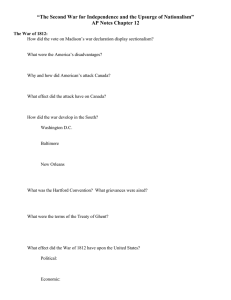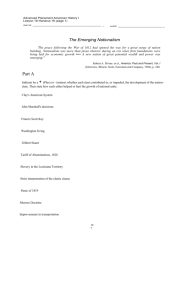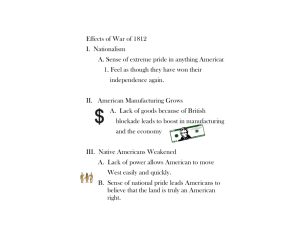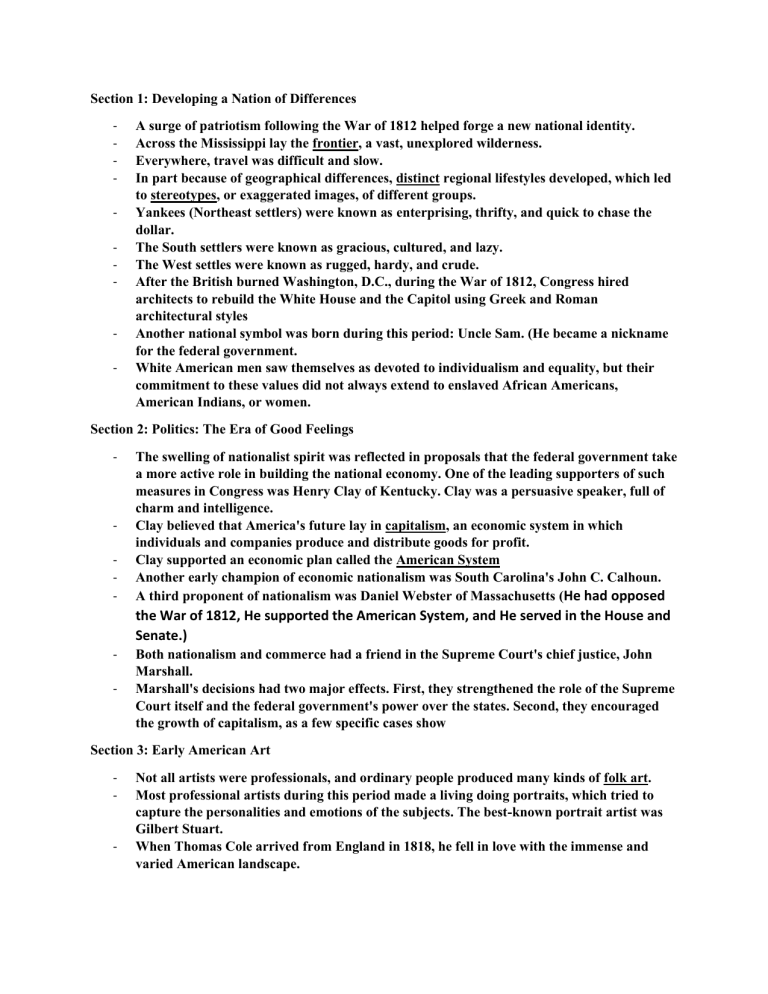
Section 1: Developing a Nation of Differences - - A surge of patriotism following the War of 1812 helped forge a new national identity. Across the Mississippi lay the frontier, a vast, unexplored wilderness. Everywhere, travel was difficult and slow. In part because of geographical differences, distinct regional lifestyles developed, which led to stereotypes, or exaggerated images, of different groups. Yankees (Northeast settlers) were known as enterprising, thrifty, and quick to chase the dollar. The South settlers were known as gracious, cultured, and lazy. The West settles were known as rugged, hardy, and crude. After the British burned Washington, D.C., during the War of 1812, Congress hired architects to rebuild the White House and the Capitol using Greek and Roman architectural styles Another national symbol was born during this period: Uncle Sam. (He became a nickname for the federal government. White American men saw themselves as devoted to individualism and equality, but their commitment to these values did not always extend to enslaved African Americans, American Indians, or women. Section 2: Politics: The Era of Good Feelings - - The swelling of nationalist spirit was reflected in proposals that the federal government take a more active role in building the national economy. One of the leading supporters of such measures in Congress was Henry Clay of Kentucky. Clay was a persuasive speaker, full of charm and intelligence. Clay believed that America's future lay in capitalism, an economic system in which individuals and companies produce and distribute goods for profit. Clay supported an economic plan called the American System Another early champion of economic nationalism was South Carolina's John C. Calhoun. A third proponent of nationalism was Daniel Webster of Massachusetts (He had opposed the War of 1812, He supported the American System, and He served in the House and Senate.) - Both nationalism and commerce had a friend in the Supreme Court's chief justice, John Marshall. Marshall's decisions had two major effects. First, they strengthened the role of the Supreme Court itself and the federal government's power over the states. Second, they encouraged the growth of capitalism, as a few specific cases show Section 3: Early American Art - - Not all artists were professionals, and ordinary people produced many kinds of folk art. Most professional artists during this period made a living doing portraits, which tried to capture the personalities and emotions of the subjects. The best-known portrait artist was Gilbert Stuart. When Thomas Cole arrived from England in 1818, he fell in love with the immense and varied American landscape. - Other artists portrayed more particular aspects of nature. John James Audubon painted finely detailed portraits of birds. Philadelphia's George Catlin turned his eye on the natives of the American West. Section 4: Early American Music - In the North, orchestras played classical music from Europe, In the South, enslaved people combined the hymns of white churchgoers with African musical styles to create spirituals. As demand for popular songs grew, composers answered with a stream of patriotic anthems. White composers from the South created a type of music known as minstrel songs that mimicked African American songs. Section 5: Early American Literature - - One of the first to achieve literary fame was Washington Irving. He drew on German folklore for his colorful tales of “Rip Van Winkle” and “The Legend of Sleepy Hollow,” One of the nation's first novelists was James Fenimore Cooper. In books such as The Pioneers and The Last of the Mohicans, Cooper wrote about the adventures of settlers in the wilderness. Davy Crockett was a real-life frontiersman who spun tall tales about his life as a hunter, soldier, and explorer. He wrote a rough humored autobiography, and He told tall tales of himself as an explorer, and He was elected to Congress by Tennessee. - New England's Henry Wadsworth Longfellow was one of the first serious American poets.
